The M37 Gun Motor Carriage was a self-propelled gun which development started at the end World War 2, based on the existing chassis of the M24 Chaffee Light Tank. The Army wa ted indeeed to replace the slower M7 "Priest" by a faster self propelled artillery platform. The first pilots were delivered in 1945 and so when standardized as the M37 the war was over. Production by General Motors was cancelled after 316 were delivered at V Day, over the initial 448 ordered. Despite being eventually supreseded by more modern systems, the M37 remained in inventory as the the Korean War broke out, and like the M41 Gorilla, it became instrumental between 1950 and 1953, especially during the later part of the war, where artillery ruled.
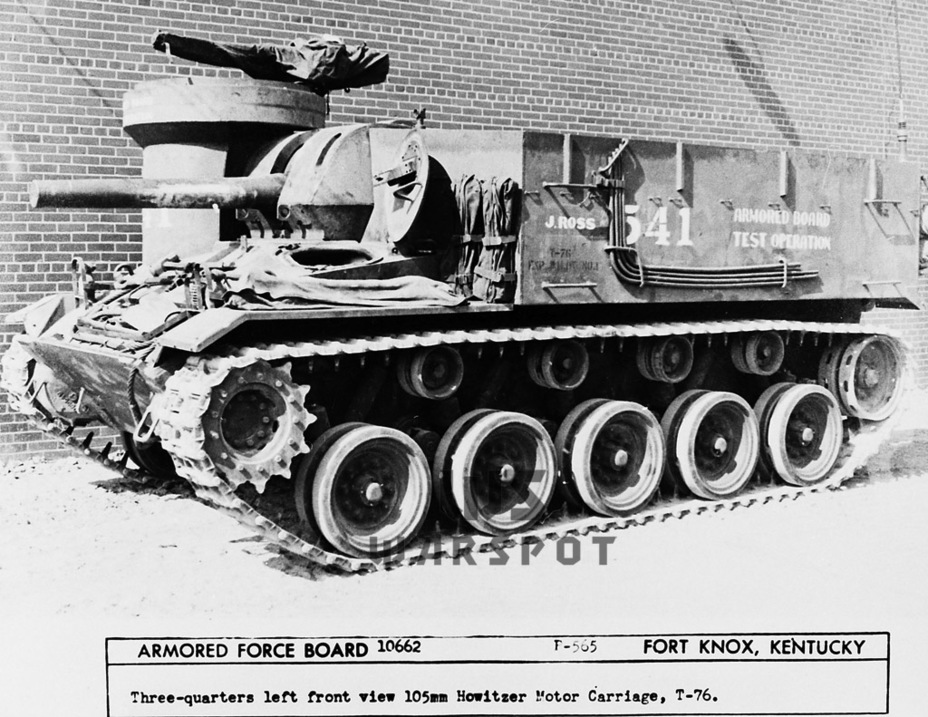
T76 pilot in 1945 src warspot
The original M24 Chaffee Light Tank appeared in 1944, produced to an extent of 4,731 by GM until August 1945. It was especially present during the hard fought battles of Western Europe and into the heart of Germany, and like the M18 Hellcat tank hunter which shared many components, they both gave the US Army a taste of what can be achieved tactically with great speed and agility. The M24 supported infantry and provided reconnaissance behind enemy lines, initially to replace the previous Cadillac M3/M5 Stuart in this role. But not only they were faster and better protected, but also featured a potent low-pressure 75mm M6 L/40 main gun and three machine guns.
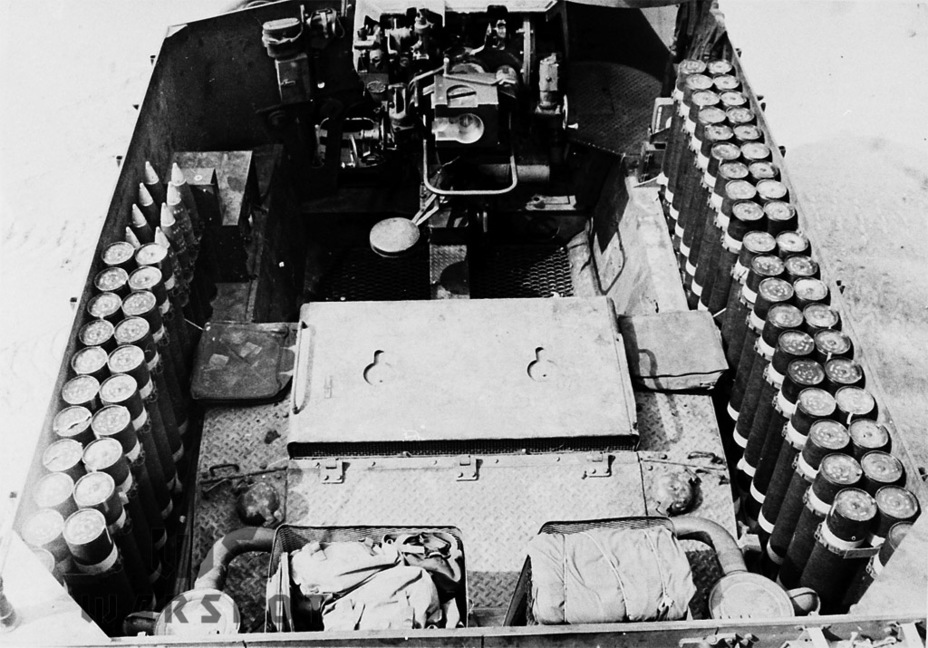
Soon the idea came to used such fast platform to exploit gaps and brought in artillery support "at cavalry pace" in a more rapidly evolving situation, something that previous self propelled howitzers were unable to do, notably the M7 or even the M8 based on the M3 Stuart. This the idea came to convert the M24 by essentially keeping the chassis, engine and running gear, while creating above it a roomy, squared and open superstructure protecting the gun crew. The M37 was to be a bit lighter than the M7 "Priest" based on the M3 Lee and M4 Sherman.
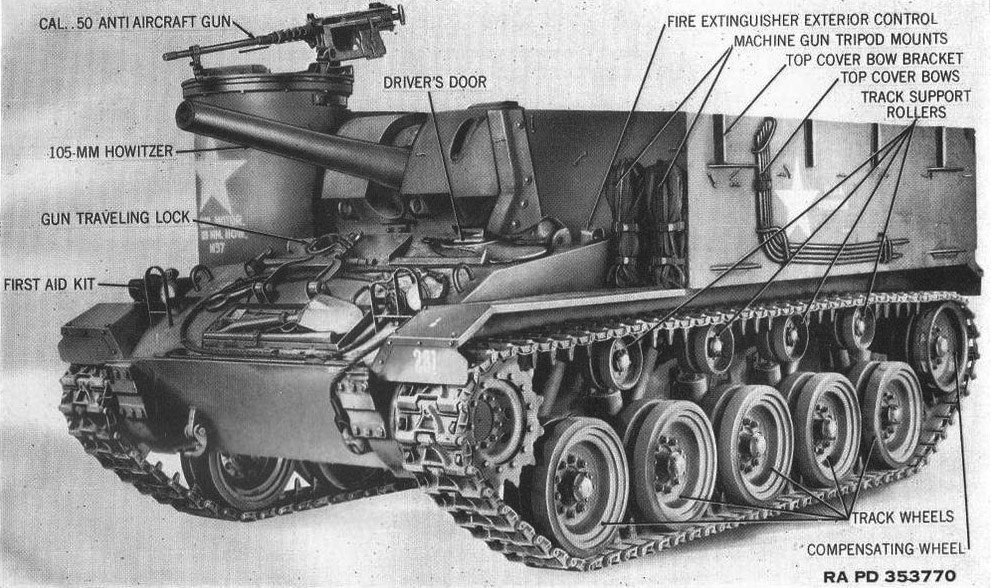
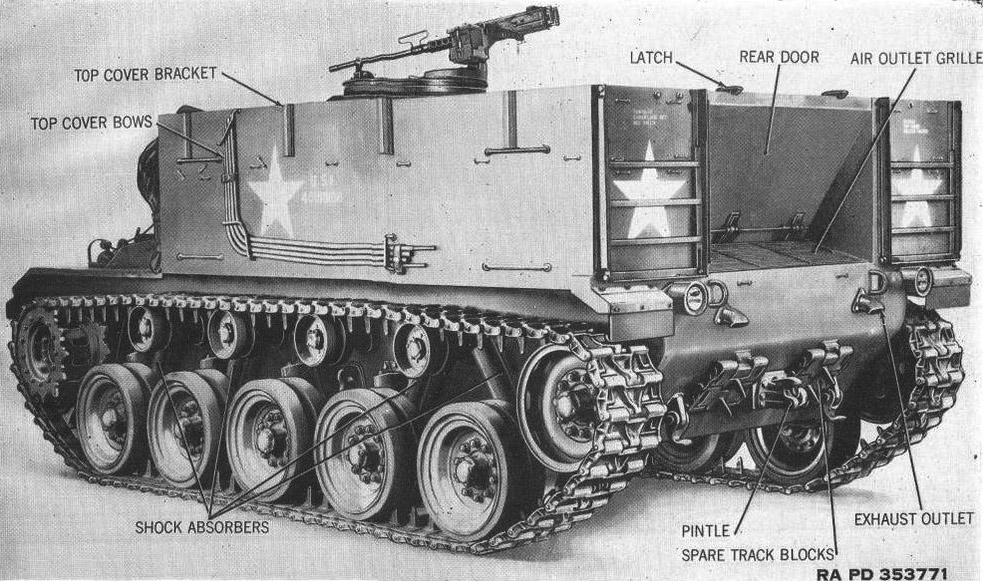
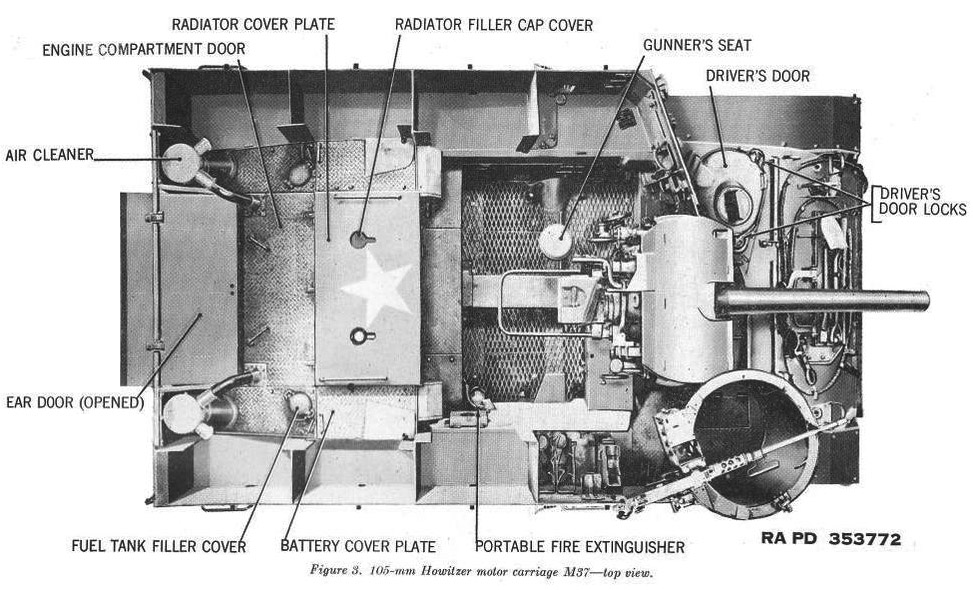
Detailed sheets explaining the M37, part of the US Army M37 HMC manual
The M7 mounted the efficient 105mm M1/M2 howitzer gun system derived from the M101 field howitzer and thus the future M37 would be fitted with its latest evolution, the 105mm M4 this time derived from the lighter M101 variant fitted on M4 Sherman 105 versions, where the shortened barrel was mounted in the standard cast turret of the Sherman. Engineers at Cadillac worked out a brand new hull superstructure wich received the protection of a similar right-side "pulpit" housing a general purpose M2HB heavy machine gun, but optional pintles for the Browning M1919A4s. The feature is what gave the vehicle is wartime "priest" names among allied equivalent (ex. Sexton, Bishop...) but the M37 would not repeat this "tradition".
By July 1943 several variants based on the M24 were considered, as the M4 Sherman chassis was too large and heavy for the light 105-mm howitzer. The M24 looked far more convenient for the Light Combat Team program, which concept was to create a family of armored vehicles based on the latest light tank. The new project received the designation T76. To gain time in development it was decided to transfer the basic layout of the M7 onto the new chassis, with minimal changes. The overall layout was preserved but the groundwork for the M12 project was resued as the engine was transferred from the rear to the middle section of the hull, freeing up a platform, but the T76 was to keep the rear engine compartment, and new fighting compartment located in the middle.
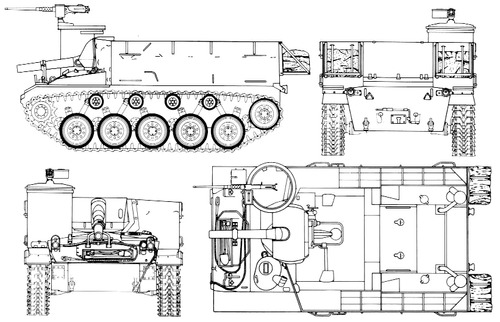
The T76 kept the forward part and more generous volumes were carved out into a box creating a combat compartment. The engine was behind a rear armor cover, connected to the front transmission with a propeller shaft underneath the fighting compartment. According to reports, the thickness of the armor plating forward was thinned down to save weight and on the next T67 it went fown to 13 mm. The lighter main armoured body was made of simple welded plates dotted with useful handles and straps, provisions for cover frames. The two 110 hp Cadillac 44T24 petrol engines used a cardan shaft to connect to the front case mechanical transmission, with air outlet grilles for ventilation under the back plate recess, and the folding utility rear door used for reloading ammunition when static.
The final T76 pilots were tested in late 1944 and production authorized in January 1945 with 448 on order after it had been standardized as the M37 HMC. American Car & Foundry was tasked of the production but it was delayed due to its involvement in the M24 chaffee production already. When the war ended in September, only about 100 were about to be manufactured, before production was transferred to Cadillac, but now down to 317, and perhaps 150 more delivered by the latter in 1946.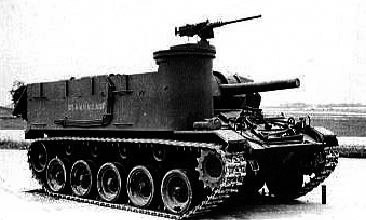 The M37 weighted 46,000 lb (20.87 metric tons) and measured 5.49 m (18 ft) including its rear storage for a width of 3 m (9 ft 10 in) and overall height 2.77 m (9 ft 1 in). It had a crew of seven with the driver, commander (also gun commander), radio/mechanic, two gunners (elevation and traverse) as well as two loaders/ammunition handlers. The latter augmented the rate of fire considerably and were helping hands in the quick supply and maintenance of the vehicle. But the crew could be down to five if needed, with the driver helping at ammunition handling and the commander acting as gunner.
The M37 weighted 46,000 lb (20.87 metric tons) and measured 5.49 m (18 ft) including its rear storage for a width of 3 m (9 ft 10 in) and overall height 2.77 m (9 ft 1 in). It had a crew of seven with the driver, commander (also gun commander), radio/mechanic, two gunners (elevation and traverse) as well as two loaders/ammunition handlers. The latter augmented the rate of fire considerably and were helping hands in the quick supply and maintenance of the vehicle. But the crew could be down to five if needed, with the driver helping at ammunition handling and the commander acting as gunner.
Like other such vehicles armor protection was quite thin, only valuable against small arms fire and artillery shrapnel (not overhead through), at best 12 mm or 0.5 inches forward and 0.3 inches or 7 mm all around. The main gun could traverse on a 52-degree arc, roughly 25° either side, and this forced the driver to adjust the entire vehicle to adress a target beyond that arc. Up to 126 shells were carried, quite a useful amount, of 105mm (4 inches) projectiles, housed in vertical racks on both sides of the rear fighting compartment for easy access to the 2-3 loaders.
Each side showed an exposed running gear with the same five double-tired road wheels as well as front drive sprockets, rear track idler/tensioners plus four track return rollers instead of three on the upper track sections. The tracks were either 410 or 360 mm wide like for the the M24, and the M37 used similar torsion bar suspensions. Fuel capacity was 110 US gallons (420 litres) for an operational range of 100 mi (160 km) about the same as the M24, but a top speed down to 305 mph (48 km/h) on road versus 35 mph (56 km/h) for the M24, down to 25 mph or 40 kph off-road, probably 35 kph for the M37.
The M37 HMC self defense was assured by a 0.50 Browning M2HB heavy machine gun fitted to a ring mount T107 on top of the left pulpit, with unlimited traverse arc for anti-aircraft defence, and with the right ammunition (AP) anti-armor. It was supplied with 990 rounds with 110 ready to fire in the loaded box. This is completed by the seven crew's personal weapons, mostly LMGs such as the M3 "grease gun", as M1 Carbine, plus grenades, including smoke ones for concealment
When came the Korean War in 1950 the relatively untapped M37 GMC stocks were reactivated, and filled fresh units sent to the frontline. There, they will play their part in the heavy fighting, with the same roles as their WW2 forebears. After the front became static, it was especially used to clear up fortified hills before assault and was found more at ease in mthis mountaineous theater than former SPH systems. After the war ended however, the M37s like the M41 had been well worn out by intense daily fire, and joined WW2 mothballs. its eventual retirement came along the M4 Sherman in 1955, but via MDAP, many were shipped across the Atlantic to The Spanish Army (Esercito), the one and only foreign user of the M37 HMC outside the US. They filled several artillery bataillons and stayed in the inventory well until the 1970s. Now several has been preserved, notably at El Goloso Tank museum.
Development

T76 pilot in 1945 src warspot
The original M24 Chaffee Light Tank appeared in 1944, produced to an extent of 4,731 by GM until August 1945. It was especially present during the hard fought battles of Western Europe and into the heart of Germany, and like the M18 Hellcat tank hunter which shared many components, they both gave the US Army a taste of what can be achieved tactically with great speed and agility. The M24 supported infantry and provided reconnaissance behind enemy lines, initially to replace the previous Cadillac M3/M5 Stuart in this role. But not only they were faster and better protected, but also featured a potent low-pressure 75mm M6 L/40 main gun and three machine guns.

Soon the idea came to used such fast platform to exploit gaps and brought in artillery support "at cavalry pace" in a more rapidly evolving situation, something that previous self propelled howitzers were unable to do, notably the M7 or even the M8 based on the M3 Stuart. This the idea came to convert the M24 by essentially keeping the chassis, engine and running gear, while creating above it a roomy, squared and open superstructure protecting the gun crew. The M37 was to be a bit lighter than the M7 "Priest" based on the M3 Lee and M4 Sherman.



Detailed sheets explaining the M37, part of the US Army M37 HMC manual
The M7 mounted the efficient 105mm M1/M2 howitzer gun system derived from the M101 field howitzer and thus the future M37 would be fitted with its latest evolution, the 105mm M4 this time derived from the lighter M101 variant fitted on M4 Sherman 105 versions, where the shortened barrel was mounted in the standard cast turret of the Sherman. Engineers at Cadillac worked out a brand new hull superstructure wich received the protection of a similar right-side "pulpit" housing a general purpose M2HB heavy machine gun, but optional pintles for the Browning M1919A4s. The feature is what gave the vehicle is wartime "priest" names among allied equivalent (ex. Sexton, Bishop...) but the M37 would not repeat this "tradition".
By July 1943 several variants based on the M24 were considered, as the M4 Sherman chassis was too large and heavy for the light 105-mm howitzer. The M24 looked far more convenient for the Light Combat Team program, which concept was to create a family of armored vehicles based on the latest light tank. The new project received the designation T76. To gain time in development it was decided to transfer the basic layout of the M7 onto the new chassis, with minimal changes. The overall layout was preserved but the groundwork for the M12 project was resued as the engine was transferred from the rear to the middle section of the hull, freeing up a platform, but the T76 was to keep the rear engine compartment, and new fighting compartment located in the middle.

The T76 kept the forward part and more generous volumes were carved out into a box creating a combat compartment. The engine was behind a rear armor cover, connected to the front transmission with a propeller shaft underneath the fighting compartment. According to reports, the thickness of the armor plating forward was thinned down to save weight and on the next T67 it went fown to 13 mm. The lighter main armoured body was made of simple welded plates dotted with useful handles and straps, provisions for cover frames. The two 110 hp Cadillac 44T24 petrol engines used a cardan shaft to connect to the front case mechanical transmission, with air outlet grilles for ventilation under the back plate recess, and the folding utility rear door used for reloading ammunition when static.
The final T76 pilots were tested in late 1944 and production authorized in January 1945 with 448 on order after it had been standardized as the M37 HMC. American Car & Foundry was tasked of the production but it was delayed due to its involvement in the M24 chaffee production already. When the war ended in September, only about 100 were about to be manufactured, before production was transferred to Cadillac, but now down to 317, and perhaps 150 more delivered by the latter in 1946.
Design of the M37 HMC
 The M37 weighted 46,000 lb (20.87 metric tons) and measured 5.49 m (18 ft) including its rear storage for a width of 3 m (9 ft 10 in) and overall height 2.77 m (9 ft 1 in). It had a crew of seven with the driver, commander (also gun commander), radio/mechanic, two gunners (elevation and traverse) as well as two loaders/ammunition handlers. The latter augmented the rate of fire considerably and were helping hands in the quick supply and maintenance of the vehicle. But the crew could be down to five if needed, with the driver helping at ammunition handling and the commander acting as gunner.
The M37 weighted 46,000 lb (20.87 metric tons) and measured 5.49 m (18 ft) including its rear storage for a width of 3 m (9 ft 10 in) and overall height 2.77 m (9 ft 1 in). It had a crew of seven with the driver, commander (also gun commander), radio/mechanic, two gunners (elevation and traverse) as well as two loaders/ammunition handlers. The latter augmented the rate of fire considerably and were helping hands in the quick supply and maintenance of the vehicle. But the crew could be down to five if needed, with the driver helping at ammunition handling and the commander acting as gunner.
Hull and layout
The 105mm gun was installed in a mounting near the centerline but slightly offset to right, and the barrel protruded from a "beak" like cast shield for protection. It was located at the forwart section of a generous open topped "box" with angled forward panels and flat ones on the sides and rear. This "armored tub" was the main station for the crew and its fighting compartment. The the driver, as in the original M24, was protected inside the hull forward, with his own hatch now encased in a superstructure on the left.Like other such vehicles armor protection was quite thin, only valuable against small arms fire and artillery shrapnel (not overhead through), at best 12 mm or 0.5 inches forward and 0.3 inches or 7 mm all around. The main gun could traverse on a 52-degree arc, roughly 25° either side, and this forced the driver to adjust the entire vehicle to adress a target beyond that arc. Up to 126 shells were carried, quite a useful amount, of 105mm (4 inches) projectiles, housed in vertical racks on both sides of the rear fighting compartment for easy access to the 2-3 loaders.
Powerplant & Performances
Just like the original Chaffee, the M37 was powered by two Cadillac Series 44 V8 Series 44T24 gasoline engines, which developed 220 horsepower (2x 164 kW) at 3,400 rpm in all for a road speed of 48 kmh but operational range of only 161 km. Indeed at 23 tons in battle order, it was far heavier than the M24 and thus, slower. The short range was also an issue and putting a strain to the supply train. The Power/weight ratio was indeed of 12 hp (8.9484 kW) per tonne. This rear-mounted engine, accessible via folding panels at the rear of the structure, was assisted by a Cadillac trademark Hydramatic transmission with 8 speeds forward and 4 reverse.Each side showed an exposed running gear with the same five double-tired road wheels as well as front drive sprockets, rear track idler/tensioners plus four track return rollers instead of three on the upper track sections. The tracks were either 410 or 360 mm wide like for the the M24, and the M37 used similar torsion bar suspensions. Fuel capacity was 110 US gallons (420 litres) for an operational range of 100 mi (160 km) about the same as the M24, but a top speed down to 305 mph (48 km/h) on road versus 35 mph (56 km/h) for the M24, down to 25 mph or 40 kph off-road, probably 35 kph for the M37.
Armament
The Main armament was the 105 mm Howitzer M4 in Mount M5, placed forward as said above. The traverse was 25.4° left and 26.3° right, all manual and elevation was up to 42.8° but it was mounted high enough to depress -10.5 degrees as well. The 126 rounds were high explosive types (HE) with optional practice and smoke rounds. The M4 Howitzer fired a 105×372 mm R 4.1 inches, complete round with integrated cartridge. The loader rammed the shell through a an Horizontal-block breech, while recoil was Hydro-pneumatic, and constant, 42 inches (110 cm). Note that the M4 on its M5 mount left less amplitude in elevation compared to the 65° of the original M4 Howitzer (10,200 manufactured by Rock island/Kia Machine tool 1941-53). Muzzle velocity was 1,550 ft/s (472 m/s) and Maximum firing range was 7.00 mi (11,270 m). Now, there were small provisions of a semi-explosive antitank ammunition, the HE-AT M67 which weighted 16.71 kg (37 lb) complete, filled with 1.33 kg (3 lb) Pentolite for a 381 m/s (1,250 ft/s) velocity of 7,854 m range (25,768 ft). At best it could defeat 102–183 mm (4–7 in) of flat armour.The M37 HMC self defense was assured by a 0.50 Browning M2HB heavy machine gun fitted to a ring mount T107 on top of the left pulpit, with unlimited traverse arc for anti-aircraft defence, and with the right ammunition (AP) anti-armor. It was supplied with 990 rounds with 110 ready to fire in the loaded box. This is completed by the seven crew's personal weapons, mostly LMGs such as the M3 "grease gun", as M1 Carbine, plus grenades, including smoke ones for concealment
M37 HMC specifications | |
| Dimensions | 5.49 x 3 x 2.77m (18 ft x 9 ft 10 in x 9 ft 1 in) |
| Total weight, battle ready | 46,000 lb (20.87 metric tons) |
| Crew | 7 (driver, cdr, AA gunner, 2 gunners, 2 ammo handlers) |
| Propulsion | 2x 220 hp Cadillac (164 kW) 3,400 rpm pw 12 hp/tonne |
| Suspension | Torsion Bars |
| Speed (road) | 30-35 mph (48-56 km/h) |
| Range | 110 US gallons (420 litres), 100 mi (160 km) |
| Armament | 105 mm Howitzer M4 in Mount M5, 126 rds, 0.5 cal. M2HB |
| Armor | 12.7 mm (0.50 in) |
| Total production | 316 (448 ordered) |
Combat Records
The much heavier, bulkier M37 had degraded performances compared to the M24. The benefit of the chassis could not be exploited due to the added weight of the mount and ammunition, plus the protecting armoured walls all around. Still, the M37 was rethought not for frontline but behind-the-lines indirect fire support. Being marginally faster than the M7 allowed to retire it. Since the war ended as the first M37s arrived in units, it was not sent to Europe but kept at home, mostly without crew after many units were disbanded. It was used for field tests and exercizes and provided to various units to replace the most worn out "Priests".When came the Korean War in 1950 the relatively untapped M37 GMC stocks were reactivated, and filled fresh units sent to the frontline. There, they will play their part in the heavy fighting, with the same roles as their WW2 forebears. After the front became static, it was especially used to clear up fortified hills before assault and was found more at ease in mthis mountaineous theater than former SPH systems. After the war ended however, the M37s like the M41 had been well worn out by intense daily fire, and joined WW2 mothballs. its eventual retirement came along the M4 Sherman in 1955, but via MDAP, many were shipped across the Atlantic to The Spanish Army (Esercito), the one and only foreign user of the M37 HMC outside the US. They filled several artillery bataillons and stayed in the inventory well until the 1970s. Now several has been preserved, notably at El Goloso Tank museum.
Illustrations
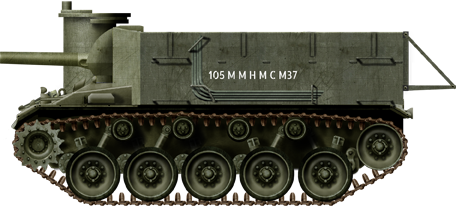
Final test pilot vehicle at Aberdeen, late 1944. Note the top cover bows are stored along the side plate.
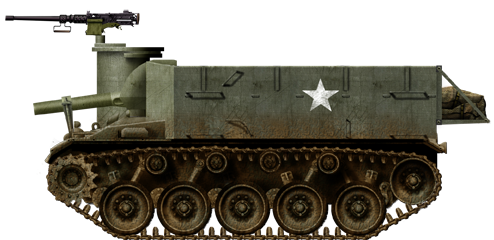
Basic Cadillac M37 HMC in 1946 in travel configuration with the howitzer resting on its travel lock and "stuff" packed on the foldable rear access step used for loading ammo.
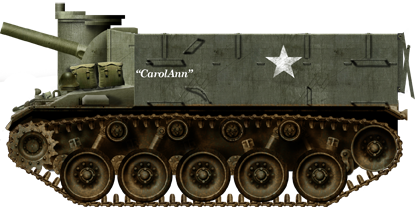
M37 in 1950 Korea "Carol Ann", at high elevation
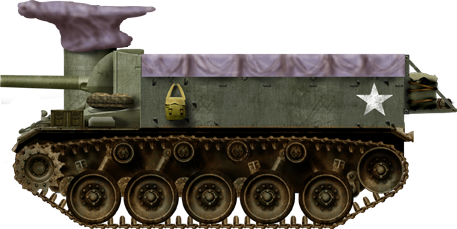
Unknown M37 covered by tarpaulin
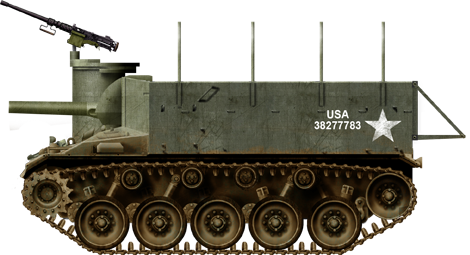
M37 with additional top cover bows for the winter tarpaulin configuration allowing the crew to operate the gun under heavy rain or snow.
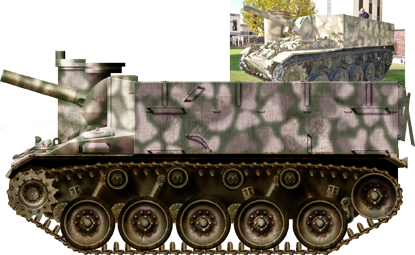
M37 HMC of the Spenish Esercito, note the funky camouflage, probably invented for the preserved example.
Photos
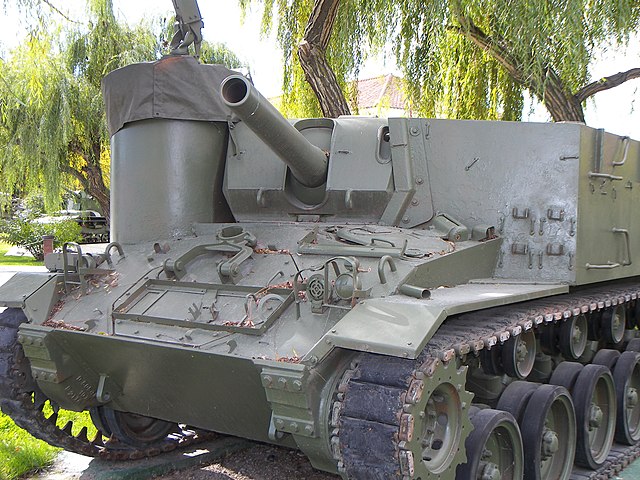
Forward M37 view, showing the gun mantlet and left visor and details of the original Chaffee hull.
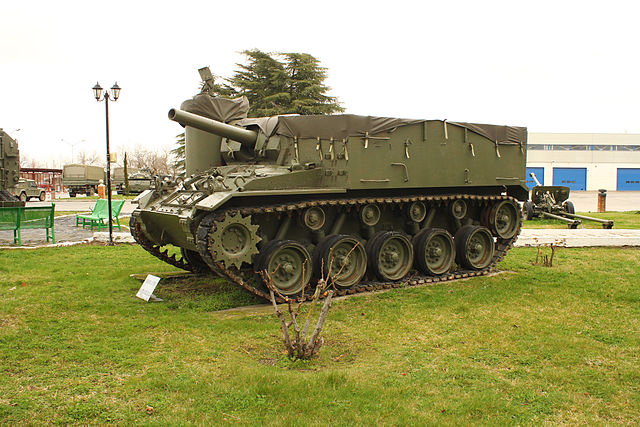
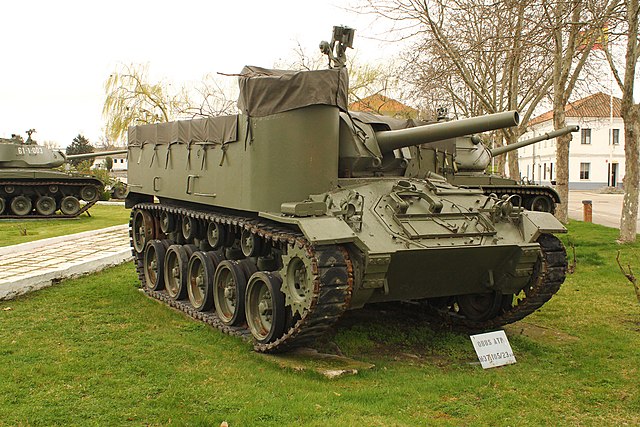
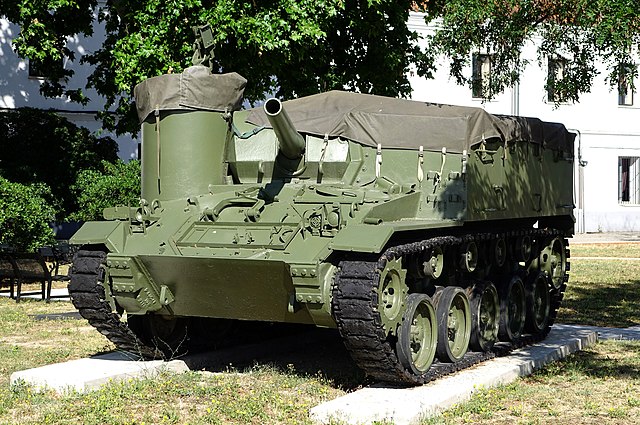
M37 HMD at El Goloso
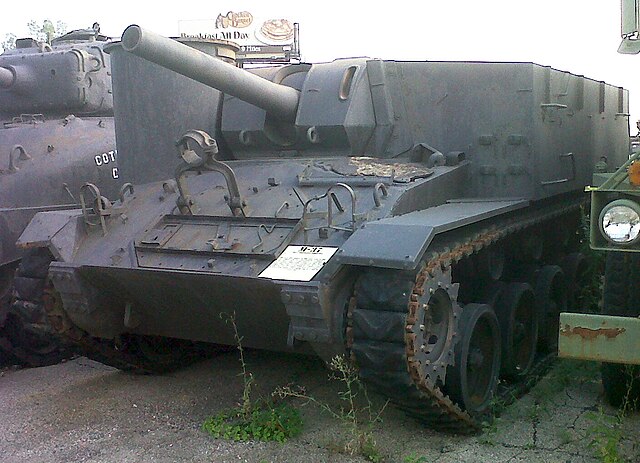
Parked surplus M37, location unknown, perhaps Aberdeen.
More
Links
olive-drab.comafvdb.50megs.com
militaryfactory.com
M7 Priest 105mm Howitzer Motor Carriage Steven J. Zaloga
weaponsystems.net
the.shadock.free.fr
m24chaffee.com
toadmanstankpictures.com
en.topwar.ru
primeportal.net
silodrome.com
armedconflicts.com
tankarchives.ca
Video
Nick Moran's cool two-part exploration of the M37 HMC in 2012.Model Kit:
Gneeral query on scalemates
Cold War Tanks


































Cold war tanks posters

Cold War Main Battle Tanks

Cold War Soviet Army
Museums, Movies, Books & Games
The Tanks and Armor in pop culture
Tanks and armored vehicles in general are only really grasped when seen first person: The mass, the scale, it's all there. Explore also the way tanks were covered in the movie industry, in books and in video games.Movies:
Best tanks movie on warhistoryonline.com
On imdb.com
On bestsimilar.com/
miltours.com
liveabout.com/
watchmojo.com
Video Games:
pcgamesn.com
historyhit.com
levvvel.com
vg247.com/best-tank-games
mmobomb.com/
alienwarearena.com

